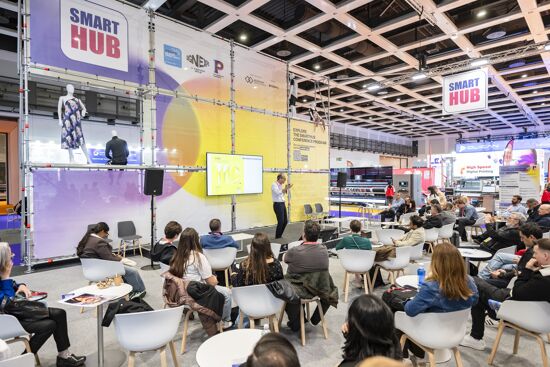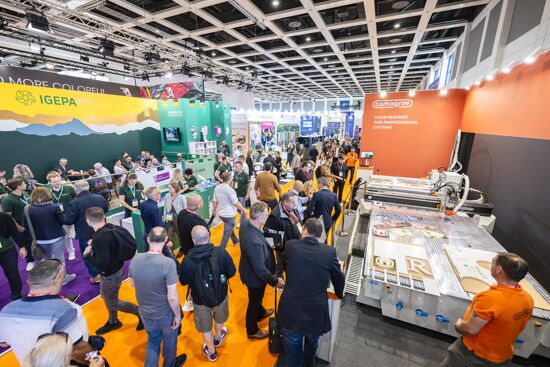The Powers of Printing White Ink
In a new guest blog, FESPA Award winners Horizon Digital Print Solutions contribute top tips about how to get ahead in the world of print.
When you work in large format point of purchase printing there’s constant pressure to produce something different that will excite the over-exposed shopper. Finding a simple solution to raise the display out of the norm, while containing costs, can be the difference between securing a job and having it go to the competitor.
To achieve this it’s necessary to invest in the latest print technologies. UV-curable ink print presses, that print white as well as the normal CMYK inks, are a perfect example of this.
White ink printing has been around commercially for a few years now and its uses include overprint, under-print, spot, under-spot, fill and over-spots for rigids. When white ink is laid down first it creates a new starting base. This gives the ability to print any effect regardless of the material it’s printed on.
To see why this is such a great advancement its important to understand that the process colour inks, for example CMYK, are in essence transparent and simply ‘tint’ the substrate; thereby taking on it’s specific qualities. Print blue on a silver metallic material and it will look a slightly washed-out metallic blue.
However print a base white and then print blue and hey presto you’ve blocked out the effect of the metallic material and your colour will once again be bright, opaque, and with the finish you desire.
Therefore you can understand then why using white colour as a blocking device has quickly becoming a graphic designer’s favorite tool to produce daring new creative effects.
At this stage we’re all used to seeing this process used in varying levels of complexity on high-impact products such as labels, wallpaper, and wrapping paper. During this Christmas season I’m sure you’ll be seeing lots of examples of it.
However what’s even more interesting is the other uses for it that are still being discovered. Recently our point of purchase print experts needed to create that chalkboard craft effect that is so popular at the moment. If it could be printed directly on MDF then it would be an easy solution to creating a high-quality rustic look that could be die-cut into any shape necessary.
They discovered that it was easy to create a working chalkboard by using white as a base and then printing black ink over it. To make it even more realistic looking, instead of printing plain black, they produced artwork that already looked like a chalkboard and then printed it over the white ink. Suddenly it looks authentic and the MDF gives you the texture that will allow the chalk to write on it. The board can be wiped off with a dry cloth and re-used just like any other chalkboard.
While it’s possible to purchase chalkboard material and chalkboard ink, it’s the ability to quickly adapt and produce the required result, without unnecessary costs and lead-time, that is so valuable to customers.
This is just one of the many fun innovations that are sure to be discovered as large printers learn more about the possibilities of the latest technology out there. Brands constantly want to produce something new and exciting for their campaigns and finding creative resolutions for them is a printer’s biggest and most exciting challenge.
Topics
Interested in joining our community?
Enquire today about joining your local FESPA Association or FESPA Direct
Recent news

Industry Experts Explore the Evolution of Smart Manufacturing in the Textile Industry
A FESPA SmartHUB roundtable at Personalisation Experience 2025 discussed smart manufacturing's transformative impact on the textile industry. Experts highlighted the shift to on-demand customisation, driven by digital printing, data analytics, and automation. Key takeaways included enhanced machine control, significant waste reduction through intelligent software and colour management, and improved sustainability via energy efficiency and near-shoring, ensuring agility and environmental responsibility in textile production.

FESPA 2025 gathers leading visionaries from across the speciality print industry in Berlin
FESPA Global Print Expo 2025, European Sign Expo and Personalisation Experience (6 – 9 May 2025, Messe Berlin, Germany) welcomed Visionaries from across the speciality print industry to shape the future of print, develop forward-thinking business strategies, and explore innovative ways to translate emerging industry trends into tangible growth opportunities.

Exploring Cutting-Edge Textile Printing Innovation with Adobe Print Engine 7
Adobe PDF Print Engine 7, launched at FESPA Global Print 2025, significantly advances textile printing. Debbie McKeegan shares how it automates non-white substrate management and RGB colour handling, expands colour gamuts with in-RIP multicolour transparency blending, and streamlines workflows for efficiency and sustainability. This update boosts customisation, reduces waste, and positions businesses at the forefront of digital print innovation.

FESPA Global Print Expo 2025 - Overall Highlights
FESPA Global Print Expo, Europe's leading print and signage exhibition returned to Messe Berlin from 6 - 9 May 2025.